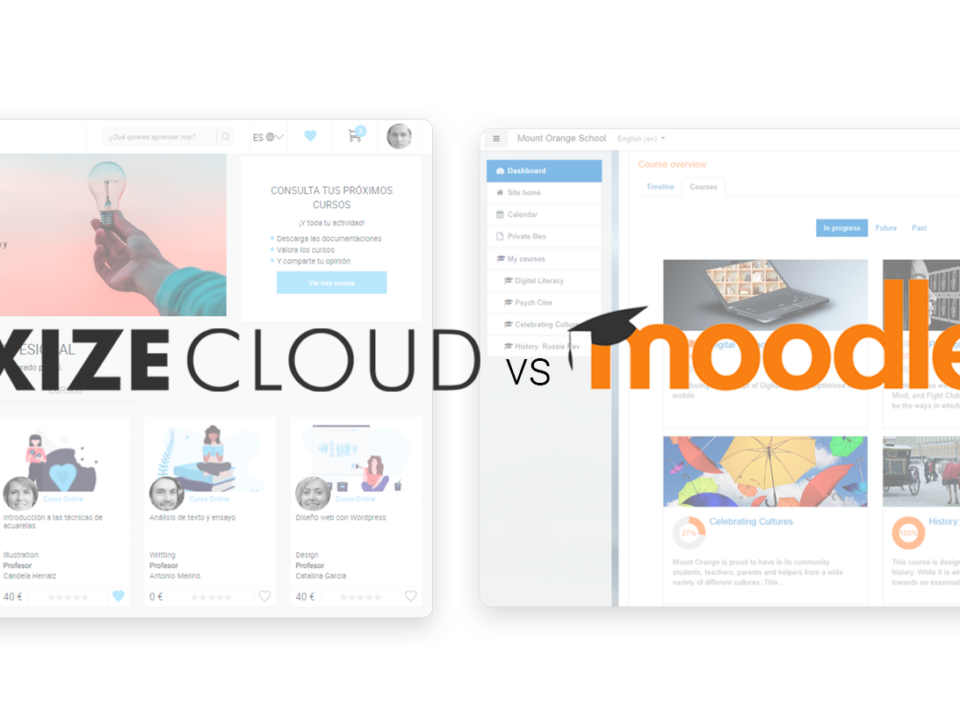Choosing what training you are going to offer is a very important step for every future student, but it is even more for the teacher. The debate repeats itself: Is face-to-face training better than online? Let's not forget that each of them has certain characteristics that the other lacks. Before deciding what type of training you want to do, we are going to investigate each one of them.
Live-Classes Training
Face-to-face training consists of carrying out the training experience in a physical place and life, where the face-to-face between teacher and student and the interaction between students is the most remarkable, making it possible to further personalize the classes and the learning of each student. Not only that but stronger connections are also created between student and teacher, allowing you to expand your network of contacts. It is the most traditional format, but no less interesting.
Face-to-face training also has its disadvantages, such as geographic restriction and the expenses involved in travelling and the effort of attendance by the students, but also by the teacher, who will have to repeat the lesson in each session.
It may be considered a very traditional and perhaps outdated format, but like other types of training, face-to-face training continues to be updated to include new dynamics:
- Conferences. There is usually little interaction between teacher and student. In fact, in the conferences the student becomes a listener, he does not have an active role in this training. Despite the little interaction, it is a very interesting format for inspiration sessions.
- Masterclass. It is the classic format of universities, where the professor conducts a theoretical master class to an audience that allows the possibility of interaction between the professor and the students. The group of students is smaller than in the lectures, which allows a question session at the end or during the class.
- Workshop. Perhaps one of the most interesting and attractive formats of live-classes training, the workshop is structured as a work session, where the teacher enunciates a series of activities to be solved by the students, individually or in groups. They are active sessions, with little content and many activities and usually complement the theory explained in the masterclass.
- Tutorships. Group or individual sessions where students solve their doubts with an expert, usually the teacher. This allows you to track the progress of each student and better understand their concerns and needs to get the most out of their learning.
Online training
As you already know, in e-learning the training experience is carried out through a screen. With the advantages offered by the Internet, the balance is increasingly being tipped towards this type of training. In addition, LMS platforms allow you to enrich online training experiences, offering a number of options and formats to customize your training.
Online courses can be carried out asynchronously, where the student has access to training and the material at any place and time, but also synchronously, like webinars. The webinars are courses, conferences and workshops that are taught over the Internet in live video format, in which students must access at a specific date and time but from anywhere in the world. In this format, the interaction between student and teacher is added together with the added value that digitization provides.
The possibilities that online training allows are enormous and at the same time offers the advantages of saving on very high costs and having greater freedom of schedule. It assumes a very great autonomy on the part of the students, but on the contrary, it has the disadvantage of being a more distant training, where communication between teacher and student is scarce. In addition, the motivation and discipline to take the courses fall on the students' willpower, which can be fragile.
Blended training
There are other types of training that combine the characteristics of the two training formats. It is blended or b-learning training, a system that combines the best of face-to-face training and online courses, allowing participants to optimize time and resources.
Through a Virtual Classroom, the teacher hosts the course in a blended way, while students can access the material through a virtual space, share their doubts, exercises and concerns through forums. Even the trainer can carry out higher quality e-mentoring or e-tutoring, attending individually to each student's queries.
There is also dynamic blended training, where students gather in a physical space to watch an online course and carry out activities and debates about what they have seen.
As you can see, there is no better or worse format and both contribute a lot of richness to the training experience. If you still do not want to refuse either of the two types of training, at Foxize Cloud we offer you to manage both your online courses and your live-classes training on the same platform. We give you 30 free days, so you can start managing your online and face-to-face training school.


